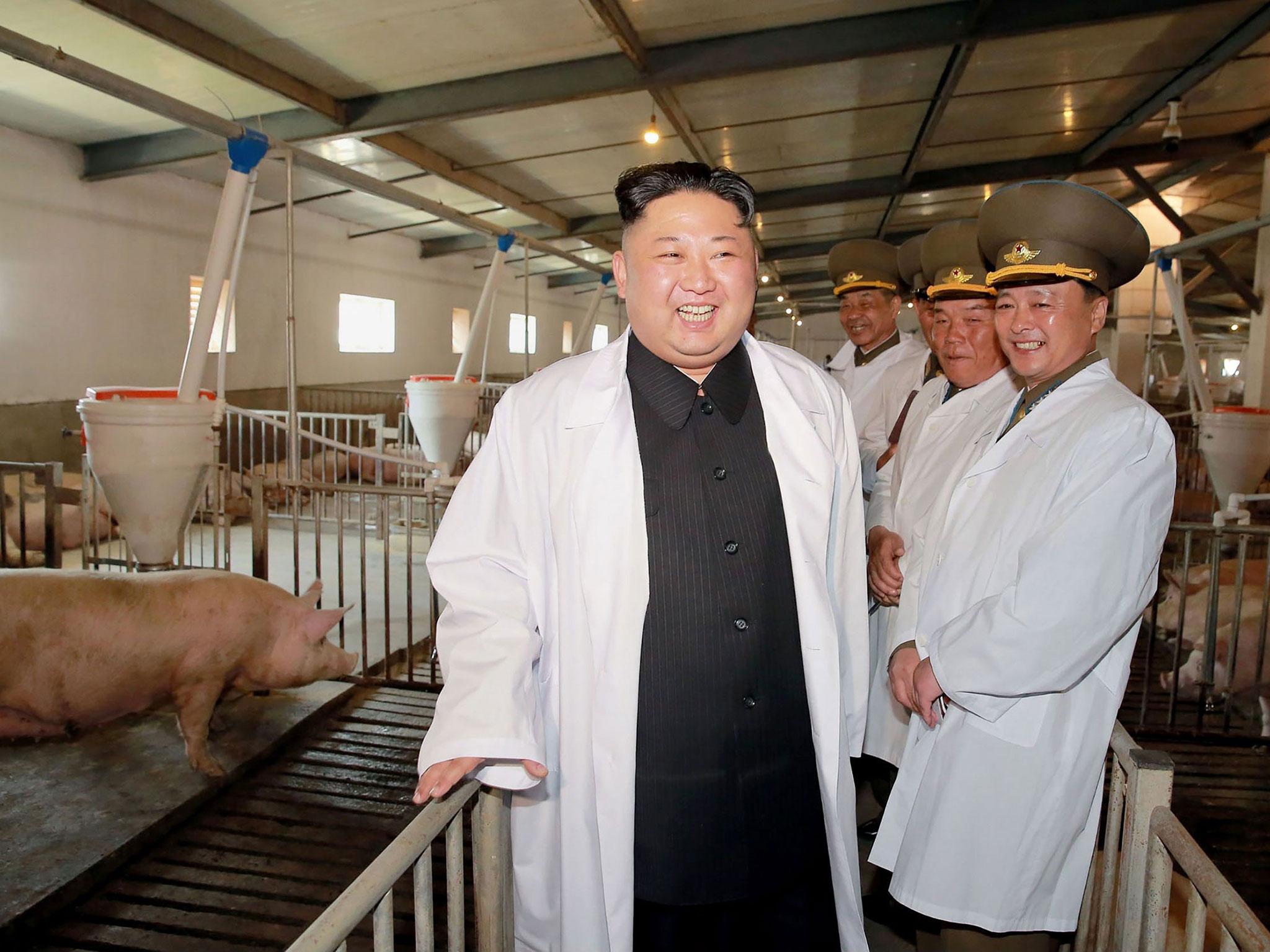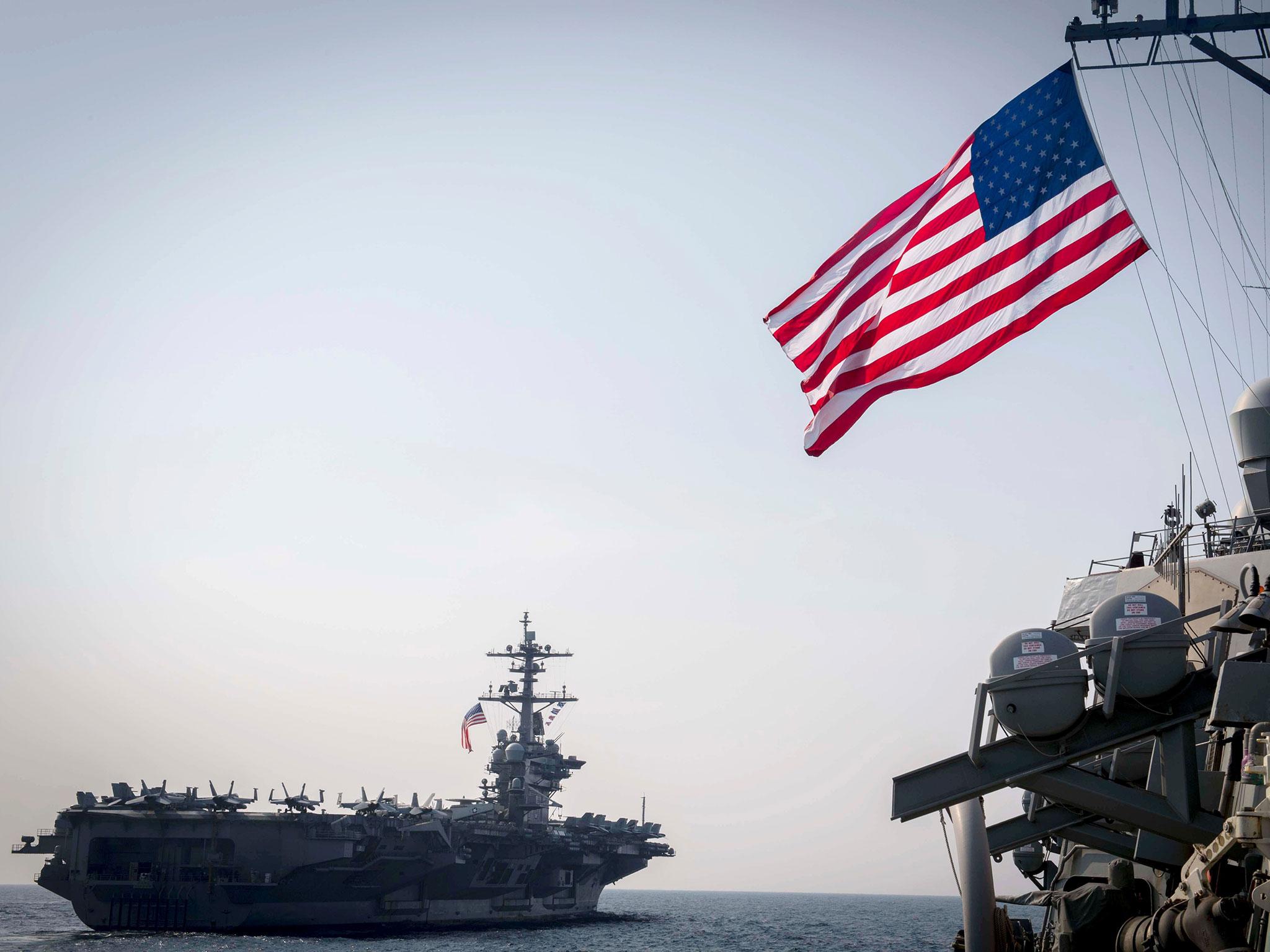What would happen if Trump went to war with North Korea?
As the totalitarian state says it is ready to sink a US aircraft carrier, experts assess whether this is a battle the US can afford to wage

“Now that we possess mighty nuclear power to protect ourselves from US nuclear threat, we will respond without the slightest hesitation to full-out war with full-out war and to nuclear war with our style of nuclear strike, and we will emerge victor in the final battle with the US.”
That is just one of the latest statements from North Korea’s interior ministry as tensions continue to rise over its missile tests and nuclear weapons programme. while on Sunday the ruling Workers' Party newspaper said the country's forces were "combat-ready to sink a US nuclear powered aircraft carrier with a single strike". The editorial further likened USS Carl Vinson to a "gross animal".
From sending new intercontinental ballistic missiles rolling through Pyongyang in a huge parade to threatening an “annihilating strike” on its American enemies, there’s little sign of Kim Jong-un’s government bowing to international pressure.
Donald Trump has attempted to strike a tough tone, threatening to “properly deal” with North Korea if China is unable to rein in its ally and sending what he described as an “armada” of warships to the region.

His orders to destroy a cave system used by Isis militants in Afghanistan using the “mother of all bombs” – which had never before been deployed – and attack a government air base in Syria were seen as warning signals to Pyongyang.
But the attacks have raised questions over whether the President would be prepared to take the same steps in North Korea and risk all-out nuclear war.
David S Maxwell, a retired US army special forces colonel who served in Korea and Japan, said an even more powerful bomb known as the Massive Ordnance Penetrator (Mop) had been developed for American forces with North Korea’s underground facilities in mind.
“There are many targets in the world buried deeply underground and the Mop was developed for that,” he told The Independent. “But I think you have to ask the question: Can a military action against North Korea not result in a catastrophic response by the North?”
Mr Maxwell, who is now the associate director at the Centre for Security Studies at Georgetown University, warned that if Pyongyang felt the existence of its regime was threatened it could launch a nuclear attack.
“They would not win a war with South Korea and the US, but they might believe that’s their only option,” he added.
“Even if it’s a pre-emptive strike to take out missile and nuclear capabilities, North Korea may feel it has to respond. This is the dilemma that strategists and policymakers face.”
The decorated former Special Operations Command Korea policy director warned that even an isolated air strike could trigger a “catastrophic response”, necessitating the evacuation of large parts of South Korea and deployment of American forces in preparation for a ground war.
Dr John Nilsson-Wright, a senior research fellow in the Asia programme at Chatham House, believes the probability of military intervention by the US is “very low”.
“The risk of provoking a conventional conflict or worse with huge casualties in South Korea militates against such a course of action,” he told The Independent. “Washington cannot risk alienating Seoul and Tokyo, and Trump himself appears more interested in using the bully pulpit of calculated ambiguity and rhetorical provocation than any serious commitment to full blown military action.”

Mr Trump dialled down his rhetoric on Friday, calling China the “economic lifeline to North Korea” after discussing the issue with Xi Jinping. “While nothing is easy, if they want to solve the North Korean problem, they will,” the President added.
His tweet came after defence sources repeatedly briefed journalists that the US was not considering a military strike, with Mike Pence insisting a peaceful resolution was still possible.
“We truly believe that, as our allies in the region and China bring that pressure to bear, there is a chance that we can achieve a historic objective of a nuclear-free Korea peninsula by peaceful means,” the Vice President said on Saturday.
“We are encouraged by the steps that China has taken so far.”

Mr Pence insisted a strike group headed by the USS Carl Vinson, which had been completing a training exercise with the Australian navy when Mr Trump made his announcement, would arrive in waters off the Korean peninsula “within days”.
Like the strikes in Syria and Afghanistan, the move could merely “harden North Korean resolve” to increase its military capabilities, Mr Maxwell warned.
He said the “real wildcard” was Kim himself, who has brutally purged challengers from his inner circle in his six years of power, adding: “There is not an intelligence service in the world that can tell us what he will do.”
South Korea is on heightened alert for potential new weapons tests as the 85th anniversary of the Korean People’s Army approaches on Tuesday, with a large concentration of military hardware massed on both sides of the border.
Joseph Yun, the US’ special representative for North Korea policy, will be in Tokyo on the day for meetings with Japanese and South Korean representatives.
North Korea has previously launched missiles or conducted nuclear experiments to mark key dates, while next week also coincides with the conclusion of its winter military drills and huge joint exercises conducted by the US and South Korea.
Satellite imagery analysed by 38 North, a Washington-based monitoring group, found activity underway at the Punggye-ri nuclear test site, but it was unclear whether the site was in a “tactical pause” before another test or was carrying out normal operations.
Dr Nilsson-Wright said that while there have been calls for the US to destroy North Korea’s weapons of mass destruction, its stockpiles would be difficult to pinpoint and heavily reinforced, with sites dispersed across the secretive country.He argued that the only way the US can hope to solve the crisis is via coordinated pressure with allies – and a willingness to negotiate.
Possible measures could include economic sanctions from China, offering political concessions in exchange for a freeze on testing and peace talks involving regional actors.

Mr Maxwell agreed, saying that although Kim’s government had learned to “get around” international banking after previous crackdowns, financial action was still the most effective. He urged the US to mitigate uncertainty and lower tensions by refusing to rise to “every missile test and every military movement with rhetoric.”
“Kim acts like a terrorist and one of the things terrorists want is notoriety,” Mr Maxwell added.
The world should instead focus on North Korea’s appalling human rights record, he said, which has largely fallen off the radar since a UN investigation revealed “unspeakable atrocities” in 2014. “When we talk about human rights, it undermines the legitimacy of the regime,” Mr Maxwell said. “There is a moral and strategic value to informing the North Korean people that we know they are suffering.”
Join our commenting forum
Join thought-provoking conversations, follow other Independent readers and see their replies
Comments